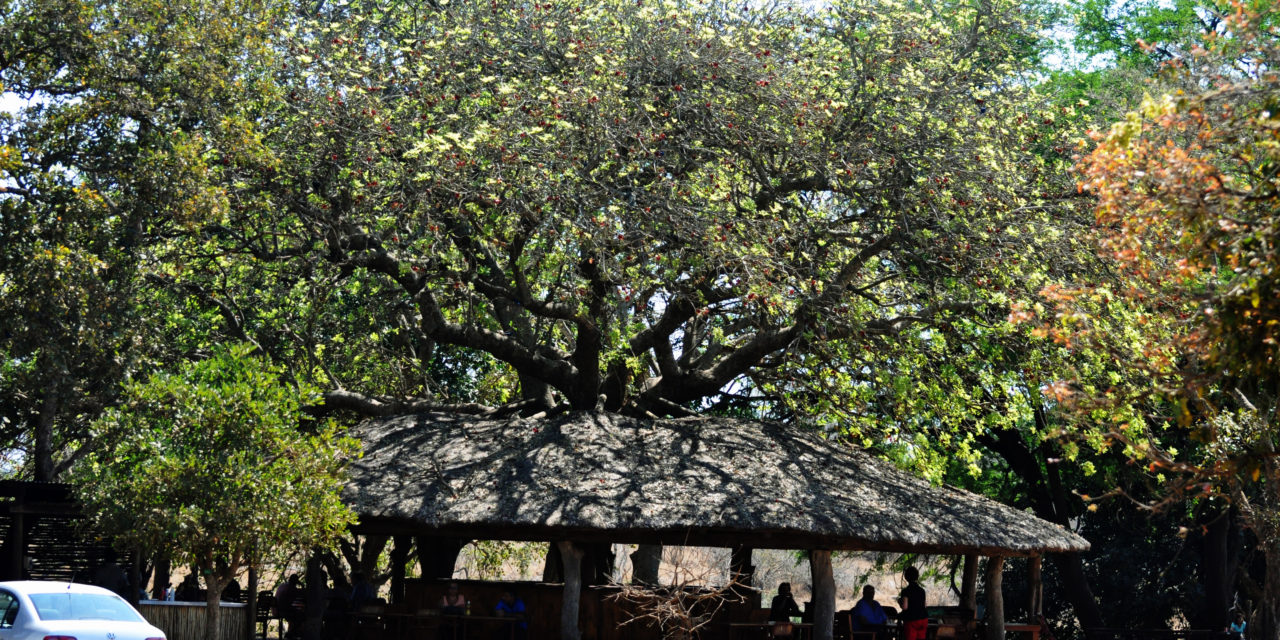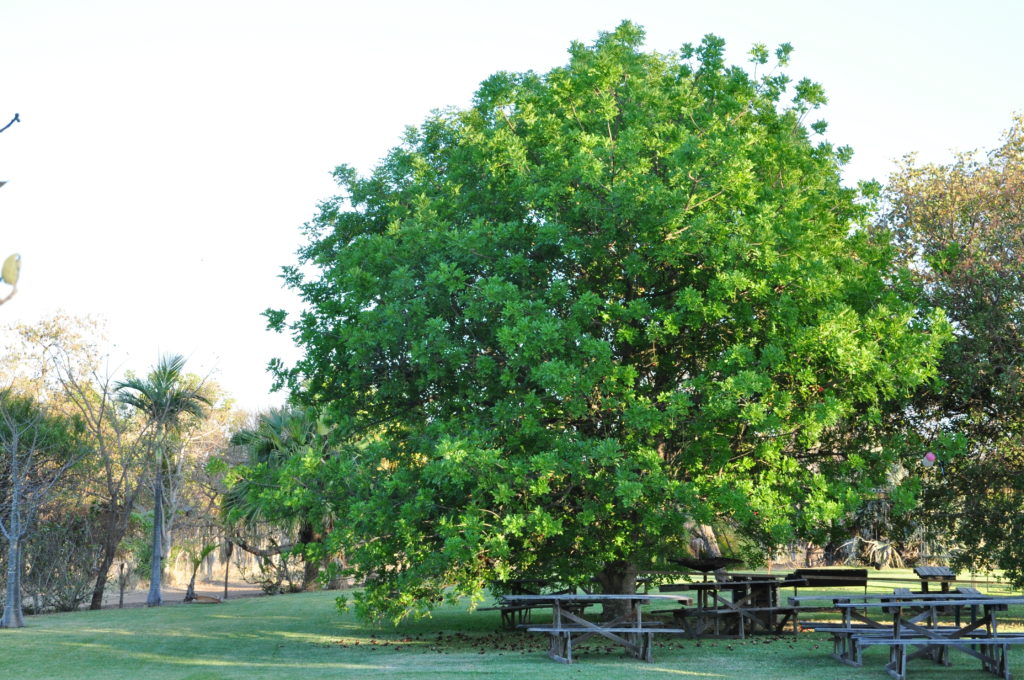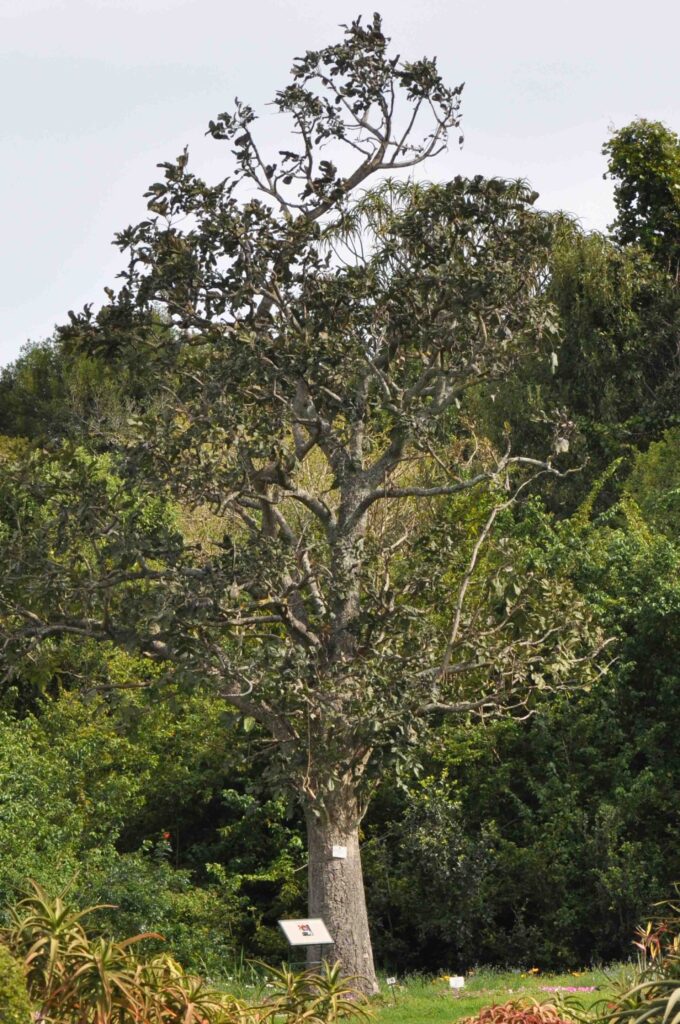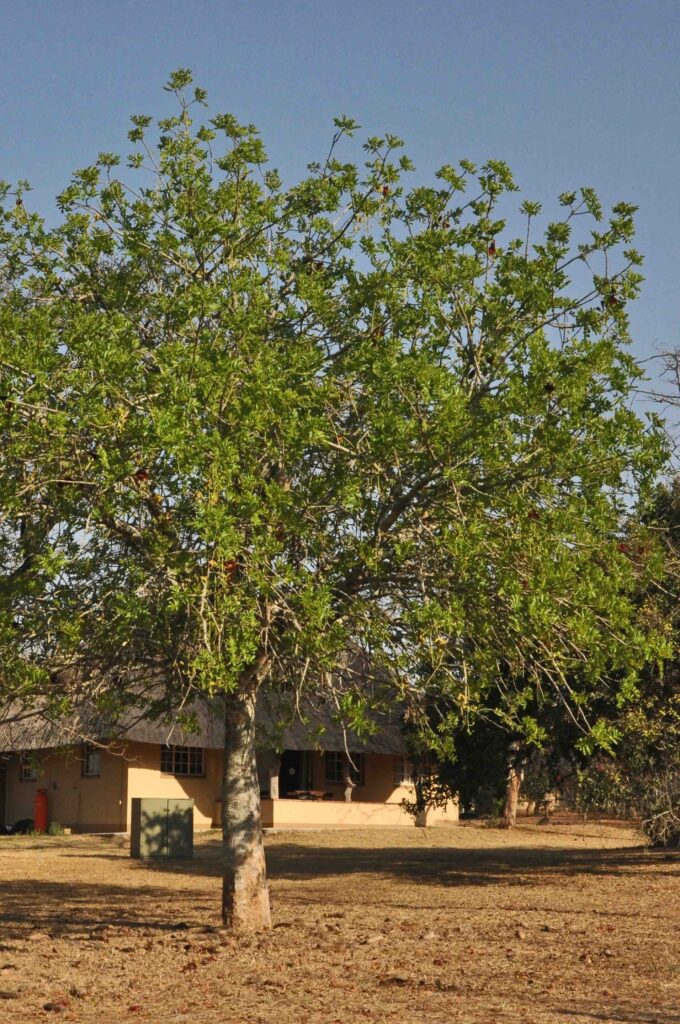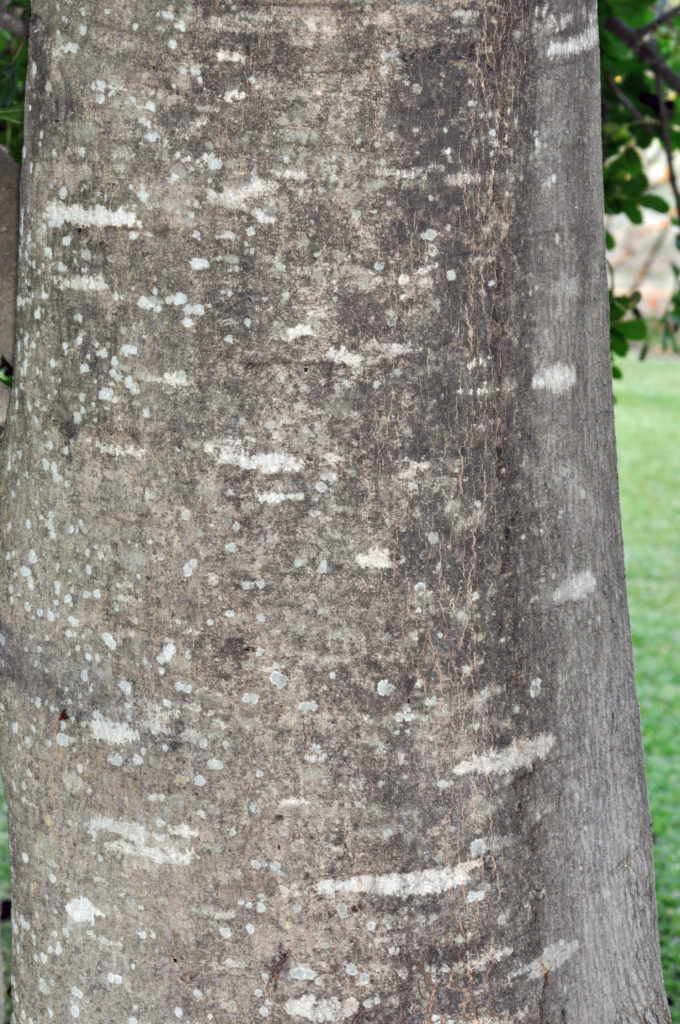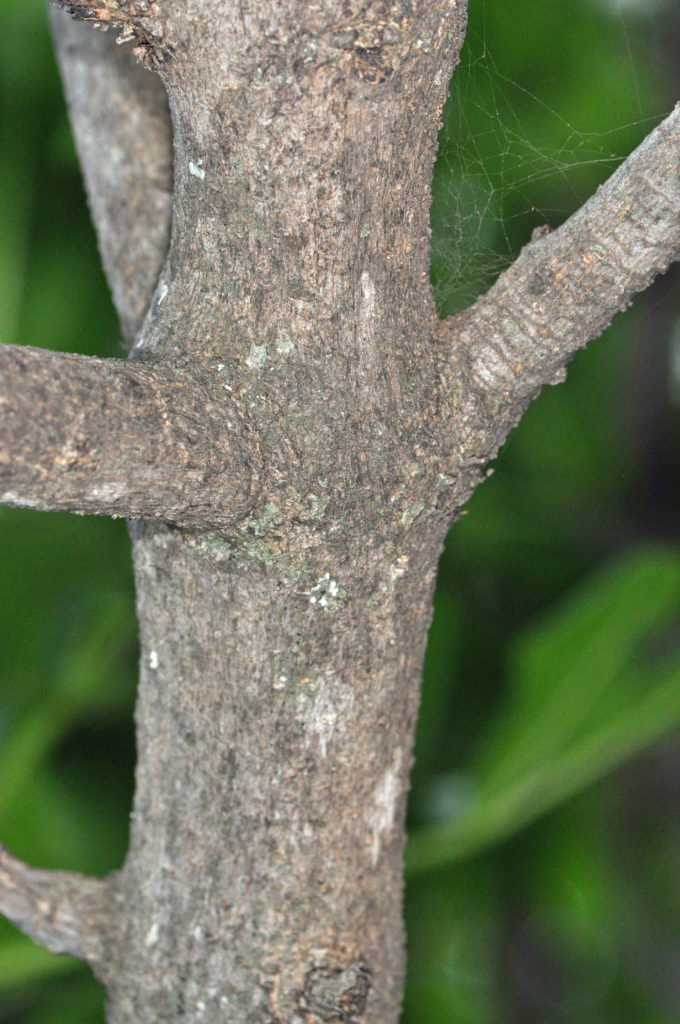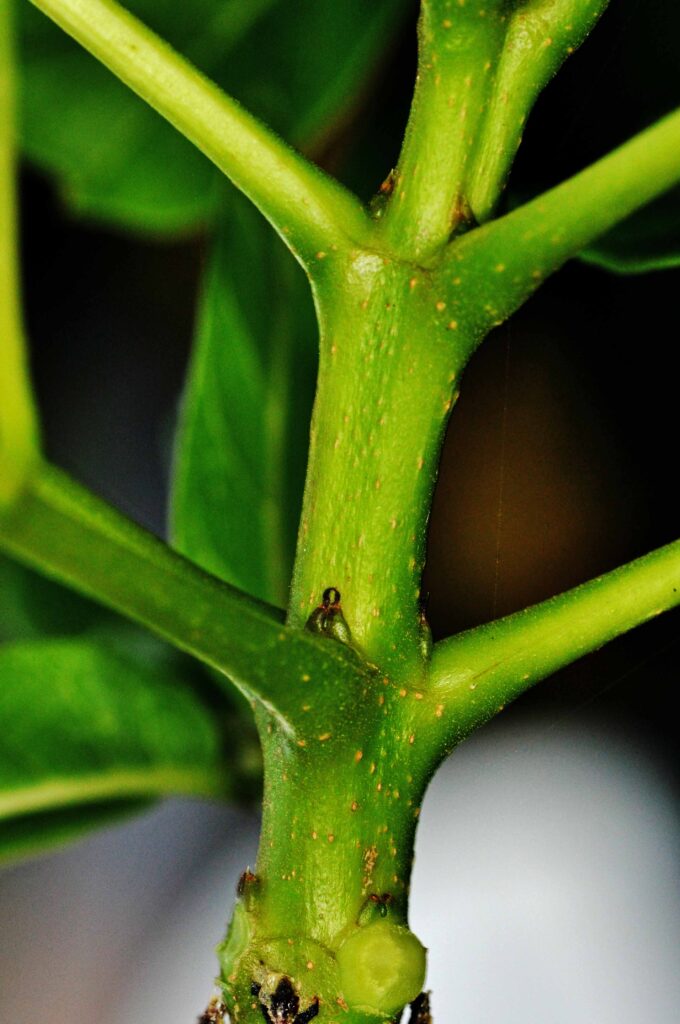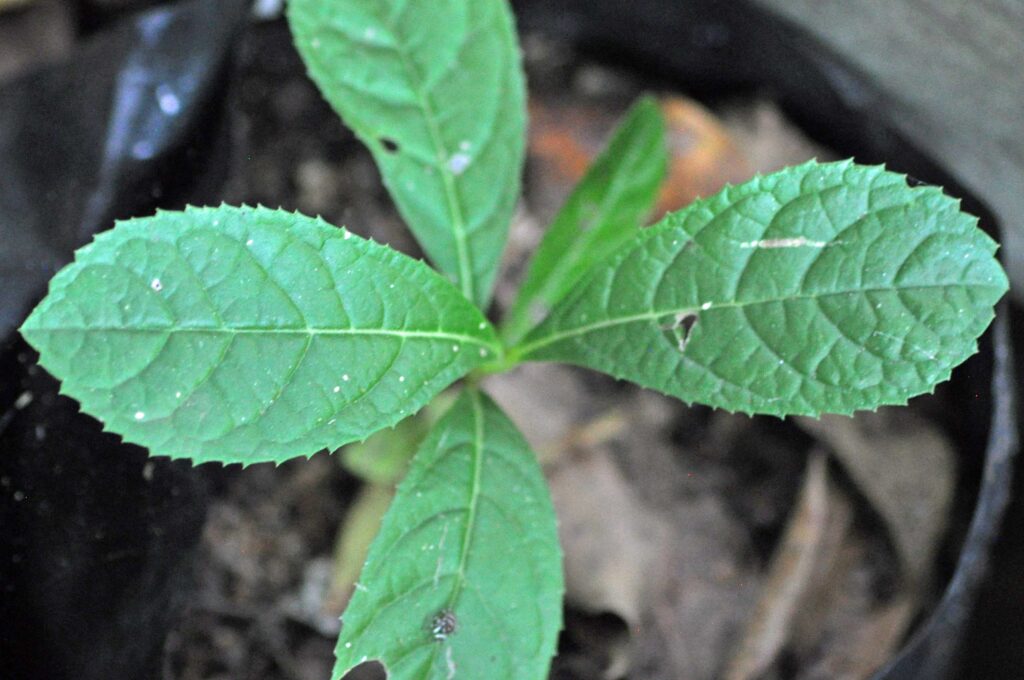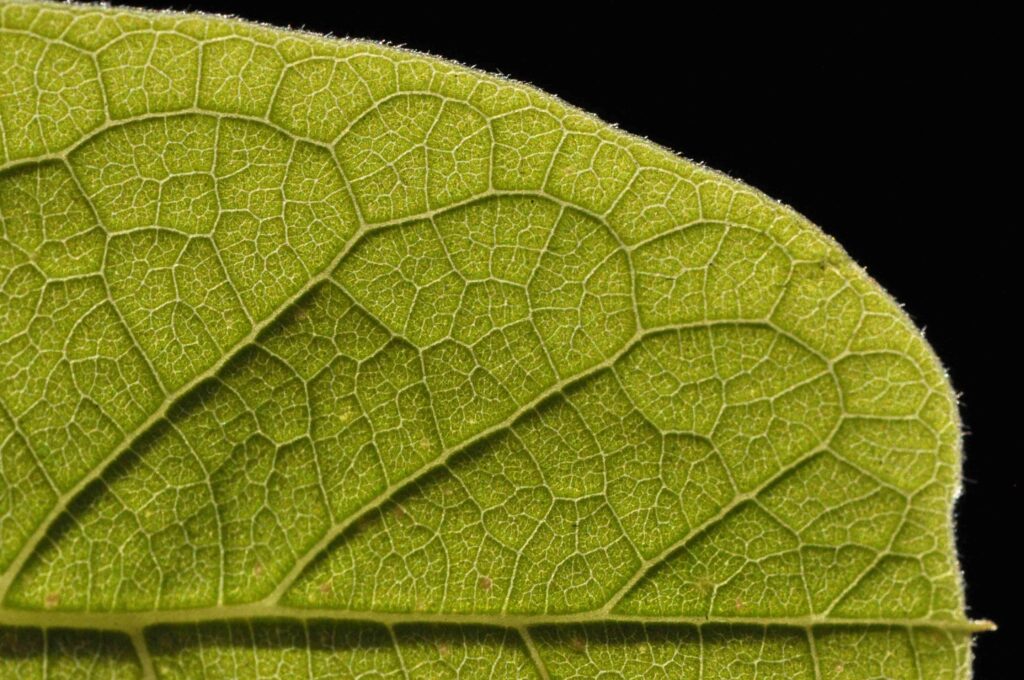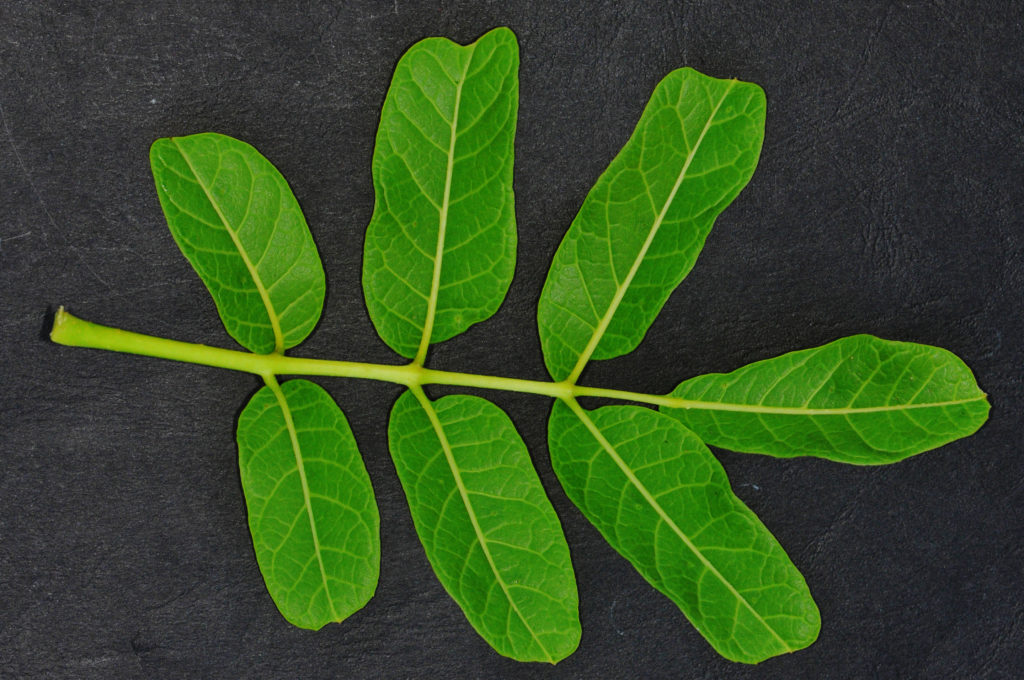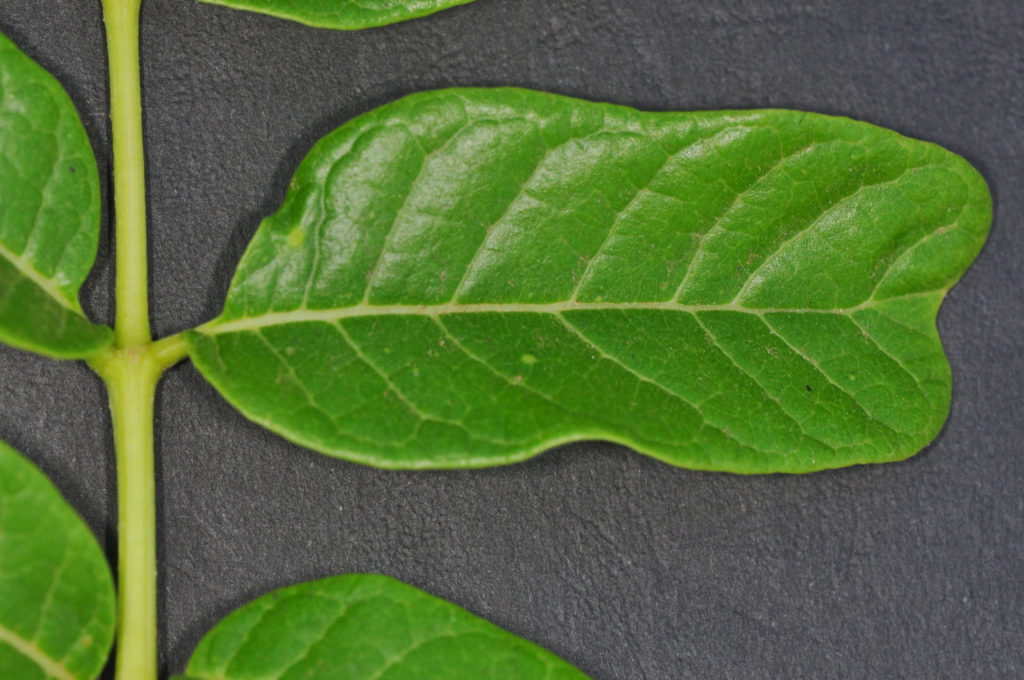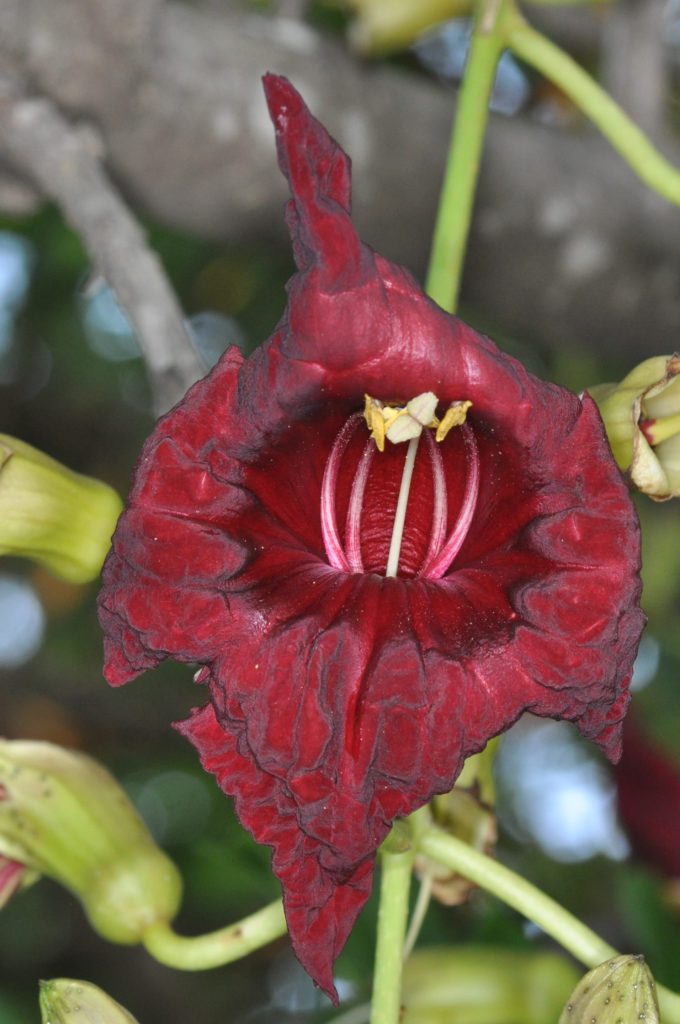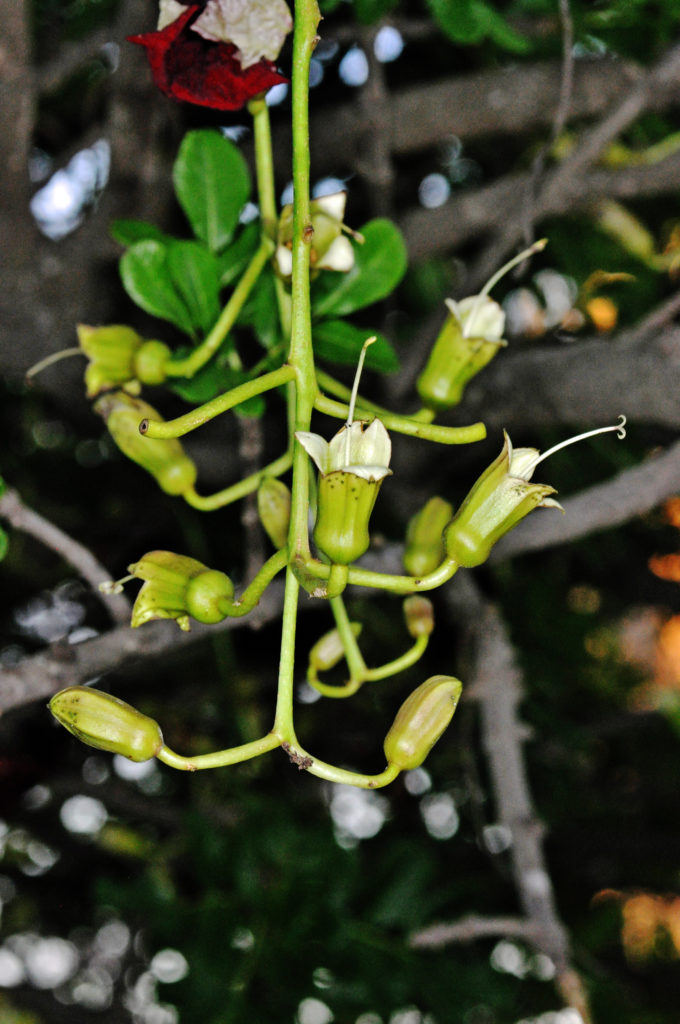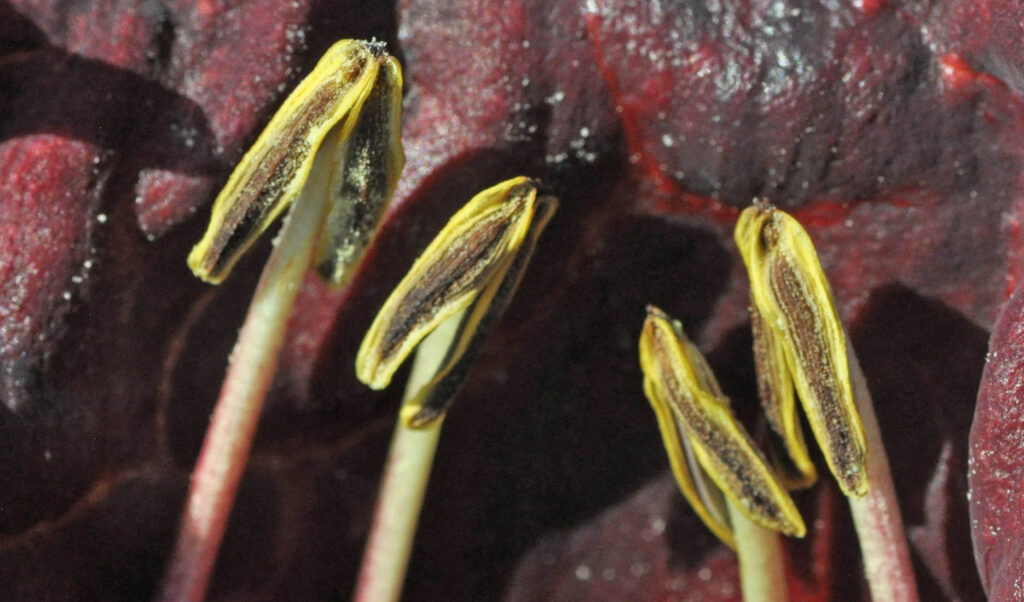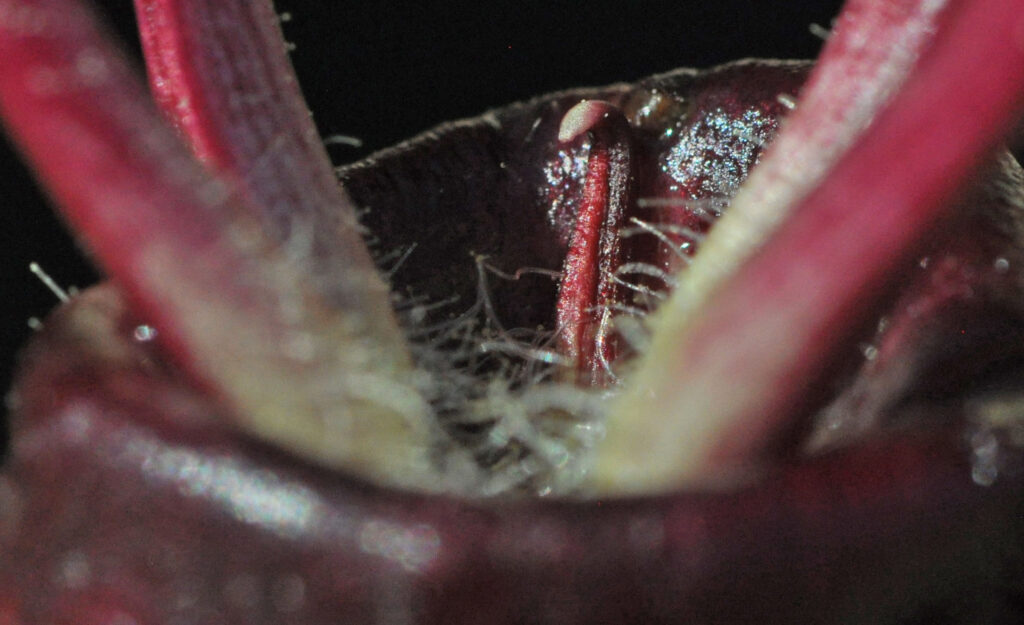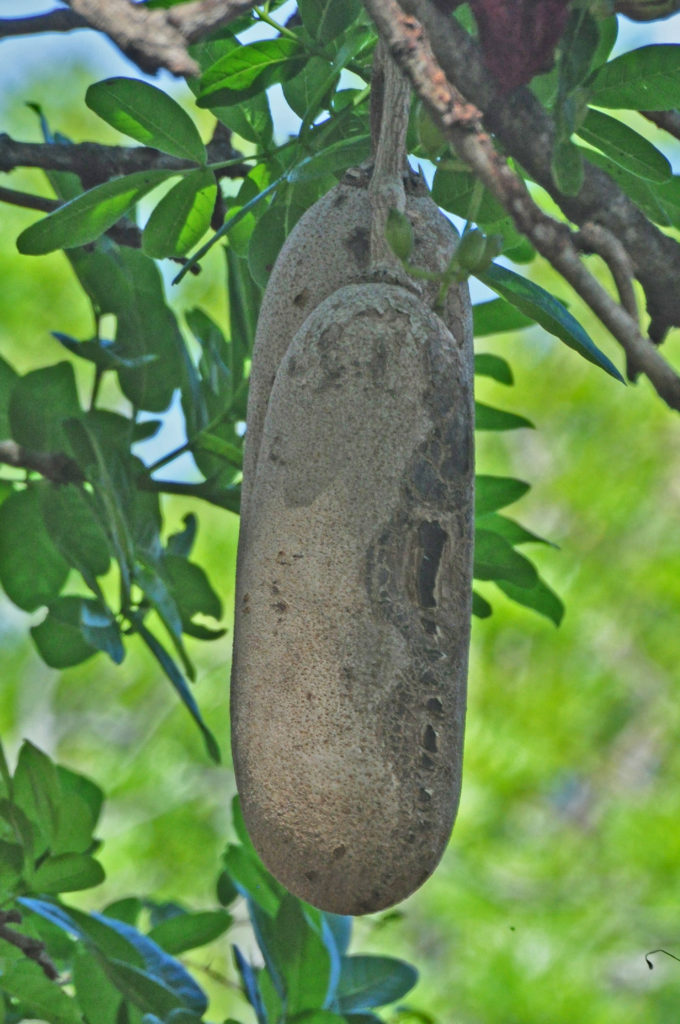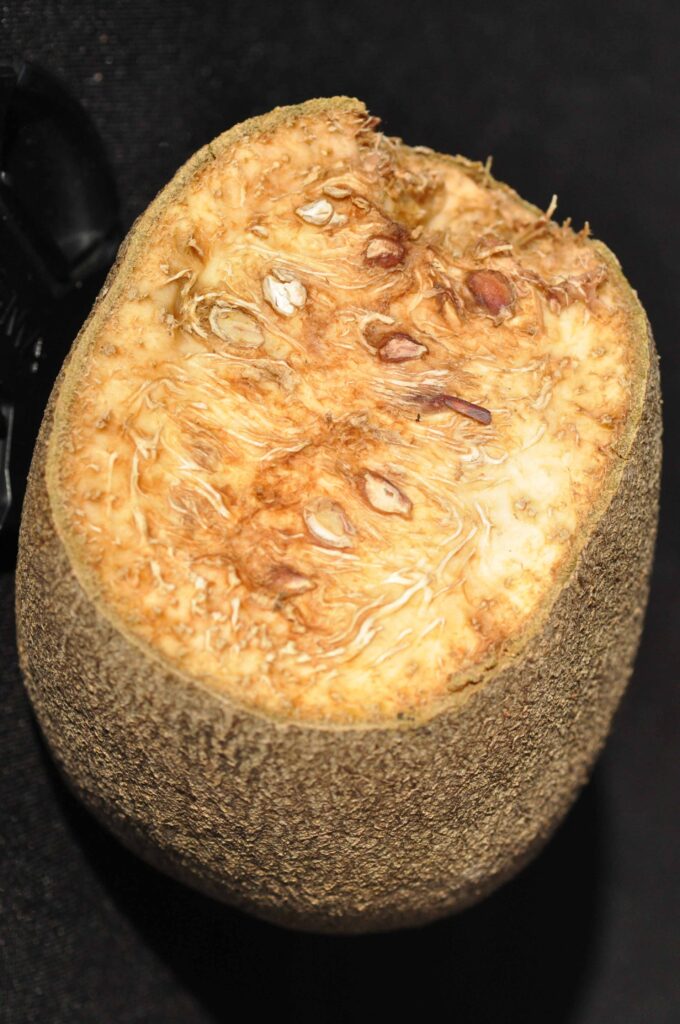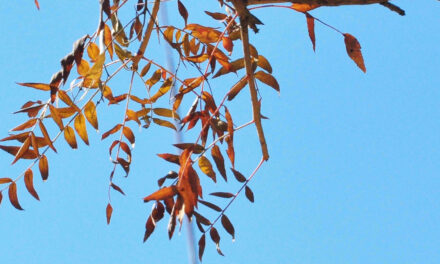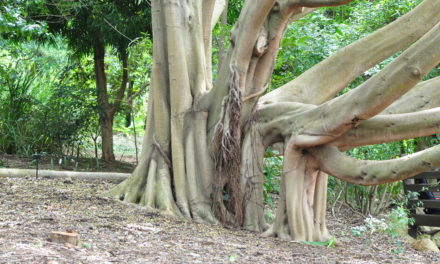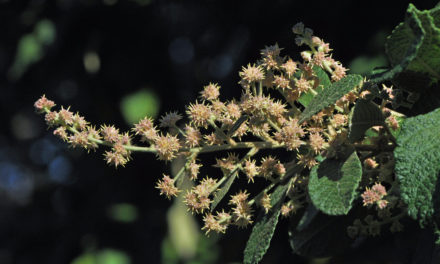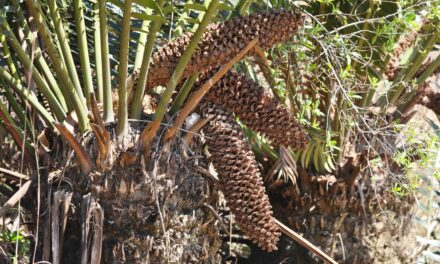General Info – summary
This fascinating Tree with its grey/brown, straight stout trunk may reach 15+m high. The imparipinnate Leaves are frost sensitive. The paired leaflets are asymmetric. The impressive large, deep red, bisexual, zygomorphic Flowers develop in panicles and have didynamous stamens and 1 staminode. The ovary is superior and rests on a single pistil. The very large, heavy Fruit is an indehiscent pod with many seeds.
Description
Kigelia africana
Previous Names: Bignonia africana, Crescentia pinnata, Kigelia abyssinica, Kigelia acutifolia, Kigelia aethiopica, Kigelia aethiopum, Kigelia pinnata.
SA Tree No. 678.
Common names: (Afr) Kalabasboom, Komkommerboom, Worsboom. (Eng) Sausage-tree, German sausage tree, Cucumber tree, Fettish bean. (isiZulu) Ibelendlovu, Umbele-le-wendlovu, Mutshata, Umvongothi, Umbongothi, Umvungutha. (Northern Sotho) Modukguhlu, Pidiso. (Setswana) Amvungutsha, Mpfungurhu. (siSwati) Umvongotsi. (Tshivenda) Mutshata, Mutzhato, Mubvevha, Muvevha.
Family: Bignoniaceae (Jacaranda family). There are about 104 genera and 810+ species. In South Africa, there are 6 genera + 2 naturalised with a total of 13 species. The indigenous genera with trees on this website include Bignonia, Kigelia, Markhamia, Rhigozum, and Tecomaria. Most species are woody. Leaves are usually compound, opposite and lack stipules. The usually large and brightly coloured Flowers are bisexual and irregular. They usually occur in panicles or racemes or are solitary. The Calyx has 5 partly united sepals which are shorter than the usually 5 joined Petals producing a conspicuous tube. The petals are often 2-lipped with the upper lip having 3 lobes and the lower lip with 2 lobes. There are usually 4 didynamous Stamens (2 long and 2 short) which arise from the corolla tube. A single staminode may be present. The Anthers have 2 pollen sacs which dehisce longitudinally. There is a superior Ovary with 2 united carpels. Many ovules are present. The simple Style terminates in a Stigma with 2 flattened lobes. The Fruit is usually a bivalved capsule. Seeds are usually flat and usually have a glassy, translucent wing.
Name derivation: Kigelia – from the Mozambique name: Kigeli-keia. africana – of Africa. K. africana is monotypic (a genus containing one species) and Kigelia is a purely African genus.
Conservation: Natural Status: L C. (Least Concern). 2005 (W. Foden and L. Potter). This status is enhanced because the tree is considered as sacred to many communities.
Tree
This is a typical tropical, African Tree with a rounded crown (photo 362) and a clean a squat bole (the bole, or trunk, is the stem and main wooden axis of a tree). It is often up to 9m high but does reach 15m high and may reach 25m high in Zimbabwe. The straight Trunk (photo 1012) has a diameter of up to 0,8m. The spreading and nearly horizontal Branches are often stout (photos 491 – intro photo & 340). Young branches are green and here Lenticels (a usually raised corky oval or elongated area on the plant that allows the uncontrolled interchange of gases with the environment) are visible (small white patches in photo 342). Bark is grey to brown and flakes off on very large trees or remains more or less smooth (photo 338). In young branches Lichen (specialised fungi cultivate algae partners that manufacture food for them by photosynthesis) may be visible (whitish in photo 338).
- 362. 2014/09/07. Modjadjiskloof Photo:: David Becking.
- 1012. 2018/09/15. Kirstenbosch NBG. Photo: David Becking.
- 328. 2019/08/16. Pretoriuskop KNP. Photo: David Becking.
- 338. 2014/09/07 Modjadjiskloof. Photo: David Becking.
- 340. 2014/09/07 Modjadjiskloof. Photo: David Becking.
- 342. 2014/09/07. Modjadjiskloof. Photo: David Becking.
Leaves
This tree may be briefly deciduous, in which case the new foliage is a conspicuous fresh coppery green in spring. Leaves become dark green. The upper surface of the Rachis (main axis bearing leaflets) is grooved. Large, opposite (usually) or 3-whorled Leaves are clustered near branch ends. Leaves are imparipinnate (pinnately compound leaves ending in a single leaflet – photo 347) and may reach a length of 25cm. Trees growing in the forests tend to have larger leaves. In addition to the single terminal leaflet, there are 2-5 pairs of large, well-spaced apart opposite leaflets that are slightly rough and hard. Hairy leaflets (photo 324) are up to 13 x 7cm. In this photo taken against a strong light, the side veins arch and join prior to reaching the margin. Each leaflet is oblong, obovate (the reverse of ovate) or elliptic. The Apex is broadly tapering to rounded or even notched (photo 344). With the exception of the terminal one, leaflets Bases are asymmetric (photo 344). Main and side Veins are indented above and prominently protrude below. The Petiole (leaf stalk) is up to 15cm long (photo 347). Petiolules (leaflet stalks) are very short or absent, with the exception of the terminal leaflet where they may reach 1,3cm long (photo 347). The Margin of mature leaves is usually entire (with a continuous margin), may be wavy (photo 344) and occasionally scalloped. Young leaves may be serrated and have a pointed apex (photo 119).
- 119. 2019/08/12. Skukuza nursery KNP. Photo: David Becking.
- 324. 2019/08/16. Pretoriuskop KNP. Photo: David Becking.
- 347 2014.09.07 Modjadjiskloof. Photo: David Becking.
- 344 2014.09.07 Modjadjiskloof. Photo: David Becking.
Flowers
Palmer & Pitman refer to this Flowers as “having barbaric splendour.” The large (up to 15cm across the mouth), impressive flowers are bisexual and zygomorphic (floral parts are unequal in size or form so that the flower is capable of division into essentially symmetrical halves by only one longitudinal plane passing through the axis). Flowers open at night and the petals fall the next day. Initially they are yellowish but become deep red (photo 336) and trumpet or bell shaped. The flowers have up to 50 buds that are arranged in lax pendulous Panicles (indeterminate, branched inflorescence with stalked flowers). They hang down in sprays that are up to 90cm long (photo 341). Long, light green Peduncles (stalks of a flower cluster) are present and hang down vertically (photo 341). From here the sturdy Pedicels (flower stalks) in groups of 3 extend sideways, are up to 11cm long and curve upwards at the tip (photo 341) causing the flower to face upwards and hold its large supply of nectar inside. The abundant available Nectar and the unpleasant Smell of the flowers (for humans) attracts pollinators, including bats and hawk moths. The annular Nectary is leathery and covered with densely matted woolly hairs. Once a single flower in a panicle has been pollinated, the rest of the up to 50 buds become non-functional. This makes sense in view of the very heavy fruit produced. The leathery Calyx (photo 341) is short and tubular with 2-5 ribbed lobes (photo 341). The 5-lobed Corolla tube is slightly curved, cylindrical below and bell-shaped above. It is bilabiate (2-lipped). The upper lip is erect and has 2 lobes (photo 336). The longer lower lip has 3 lobes and bends abruptly downwards. The crumpled flowers change from yellowish to reddish and finally are slightly purple. The 4 Stamens are didynamous (having 4 stamens disposed in 2 pairs of 2 different lengths – photo 291). These are attached at the top of the cylindrical part of the corolla tube and protrude slightly (photo 336). Soft hairs cover the base of the linear, red, thick and leathery Filaments (photo 293). This close up photo shows the single short posterior Staminode (sterile stamen). The Anthers have separate Theca (pollen sacs – photo 291). In this photo the pollen grains are just visible. The single Pistil (a unit of the Gynoecium, the female element of the flower, composed of the Ovary, Style and Stigma) has a superior unilocular Ovary containing many ovules. The Stigma has 2 elliptic lobes (photo 336 & 341). (Jul-Oct).
- 336 2014.09.07 Modjadjiskloof (Duiwelskloof). Photo: David Becking.
- 341 2014.09.07 Modjadjiskloof (Duiwelskloof). Photo: David Becking.
- 291 2019.08.14 Pretoriuskop KNP. Photo David Becking Dissected.
- 293 2019.08.14 Pretoriuskop KNP. Photo David Becking. Dissected.
Fruit
The grey, cylindrical, woody, pendulous and sausage shaped Fruit is a very large, indehiscent Pod (up to 100 x 18cm – photo 577). This pod, with its grainy surface, is diagnostic. It is fleshy and fibrous within (photo 330). The indehiscent hard-walled fruit may have a mass of up to 12kg and hangs down from a sturdy stalk (photo 577). The numerous small wingless Seeds (photo 330) are imbedded in a fibrous pulp and each seed has a leathery Testa (seed coat) which intrudes between the 2 Cotyledons (seed leaves; primary leaves in the embryo). (Nov-Aug).
- 577M 2014.09.11 Lower Sabi Road KNP. Photo: David Becking.
- 330 2019.08.16 Pretoriuskop KNP. Photo: David Becking.Pretoriuskop KNP
Distribution & Ecology
These Trees occur in flood plains and along watercourses at relatively low altitudes. They are common in the bushveld (a sub-tropical woodland ecoregion of southern Africa) along riverine fringes and may occur near the coast. They also occur on rocky hills. These trees are naturally located in North East Southern Africa, including KwaZulu-Natal, Gauteng, Mpumalanga, and Limpopo, Northern Province, through Swaziland, Mozambique (widespread), northern Botswana, Zimbabwe and North-eastern Namibia – Caprivi Strip. From here, they occur northwards into tropical Africa. Kudu browse the Leaves and baboons and bushpigs (Potamochoerus larvatus) eat the Fruit. Many insects visit the Flowers and the fallen flowers are eaten by game. Monkeys consume the Nectar, the whole flower and flower buds. The abundant nectar attracts a wide variety of birds in the early morning – including sunbirds. Seeds (especially when unripe) may be poisonous to man. In needy times, the seeds have been eaten after roasting. However, baboons, monkeys, porcupines and bushpigs consume them. Apart from its diet of small animals, the Southern Boubou (a bushshrike) also feeds on the seeds. Tree Sap attracts Charaxis butterflies, known locally as Emperors. They are relatively strong and high-flying. This plant is also is the larval food for the Garden Acraea (Acraea horta) butterfly with its partly transparent wings.
Ethnobotany
The Fruit is purgative and is eaten by domestic animals. The baked fruit has been used to ferment beer. The Wood is light to pale brown, soft, tough and does not split easily. It is resistant to cracking and is used for planking, yokes, oars, stampers, plates and for canoes. The tree produces a dense shade. Propagation is from fresh seeds or truncheons (stem cutting from a selected plant – used to produce genetically identically new plants) and does well in warm areas. However, the leaves are sensitive to severe frost and branching may take a couple of years. This plant makes a good bonsai. After roasting, the Seeds are possibly edible. Bark and Leaves are bitter tasting. These trees have been planted to help stabilise riverbanks. A yellow dye is extractable from the Roots. When used as a shade tree, care must be taken to avoid the heavy falling fruits. It is safer to remove the young fruit. The Tree is widely used in local medicine.
References
Boon, R. 2010. Pooley’s Trees of eastern South Africa. Flora and Fauna Publications Trust, Durban.
Burrows, J.E., Burrows, S.M., Lotter, M.C. & Schmidt, E. 2018. Trees and Shrubs Mozambique. Publishing Print Matters (Pty) Ltd. Noordhoek, Cape Town.
Coates Palgrave, M. 2002. Keith Coates Palgrave Trees of Southern Africa. edn 3. Struik, Cape Town.
Foden, W. & Potter, L. 2005. Kigelia africana (Lam.) Benth. National Assessment: Red List of South African Plants version 2020.1. Accessed on 2023/08/04.
Lawrence, G. H. M, 1951. Taxonomy of Vascular Plants, The Macmillan Company, New York. Tenth Printing 1965. p698.
Palmer, E. & Pitman, N. 1972. Trees of southern Africa. Balkema, Amsterdam, Cape Town.
Schmidt, S. Lotter, M. & McCleland, W. 2002. Trees and Shrubs of Mpumalanga and the Kruger National Park. Jacana, Johannesburg
van Wyk, B. & van Wyk, P. 1997 Field guide to Trees of Southern Africa. Struik, Cape Town.
http://www.plantzafrica.com/plantklm/kigeliaafric.htm
https://en.wikipedia.org/wiki/Kigelia
http://www.kew.org/science-conservation/plants-fungi/kigelia-africana-sausage-tree
http://posa.sanbi.org/flora/browse.php?src=SP

